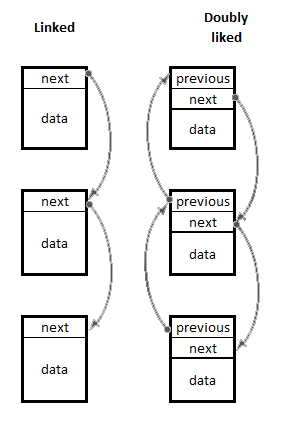Linked lists, as the name suggests, consists, of data items (nodes) that are linked to one another by means of pointers. Basically, there are two types of linked lists:
- Linked list: This is where each node has a pointer to the following node
- Doubly linked list: This is where each node has a pointer to the following and previous nodes
The following diagram illustrates the difference:

Linked lists of both types may be addressed in a few ways. Obviously, there is at least a pointer to the first node of the list (called top), which is optionally accompanied by a pointer to the last node of the list (called tail). There is, of course, no limit to the amount of auxiliary pointers, should there be a need for such. Pointer fields in the nodes are typically referred to as next and previous. As we can see in the diagram, the last node of a linked list and the first and the...


